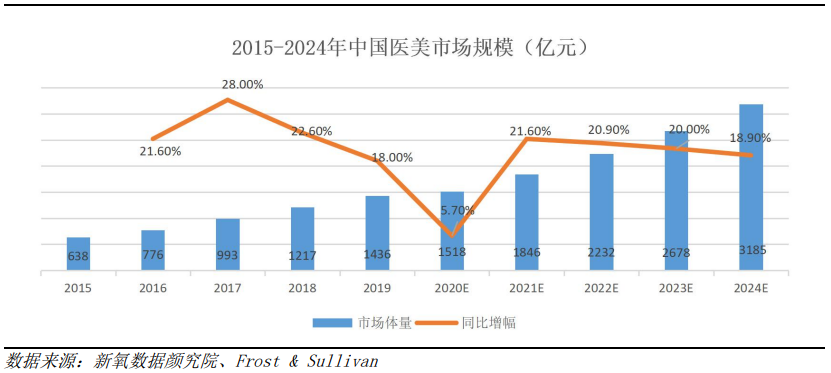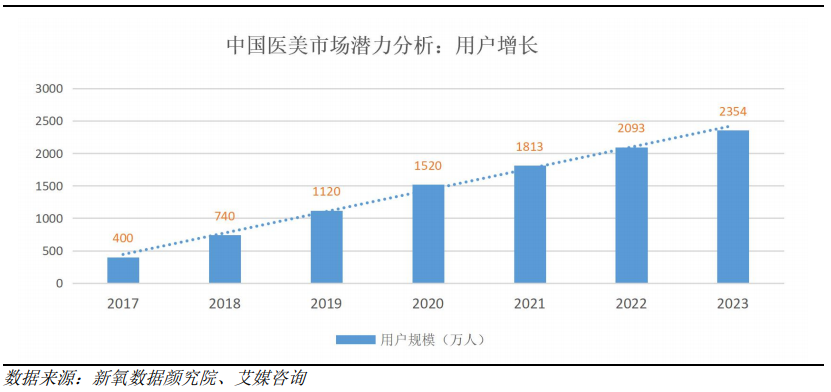China’s per capita GDP exceeded 10, 000 US dollars for the first time in 2019, which objectively provided economic support for the rise of medical consumption; on the meso level, the gradual improvement of national policy and the continuous entry of industrial capital created a good industrial environment for the vigorous development of the medical industry, and gradually broke down the information barrier to enhance the sense of trust in medical beauty. At the micro level of
the release of demand for medical beauty brought about by the rise of demand for beauty, as well as the landing of a large number of new products brought about by the technological progress of medical beauty, jointly promote the medical beauty industry into a boom period from the two dimensions of demand and supply. The size of China’s medical and beauty industry is expected to reach 184.6 billion in 2021, an increase of 21.6% over the same period last year, the fastest year-on-year growth in the past three years.
in the past few years, the high growth rate of the medical and beauty industry has attracted a lot of attention. In 2020, despite the impact of the epidemic, the growth rate of China’s medical and beauty market was only 5.7%, much lower than the double-digit compound growth rate in previous years. However, the consumption of medical beauty begins to show the trend of "ldquo; Breaking Circle & rdquo;". According to
data, the number of people consuming medical beauty in China reached 15.2 million in 2020, an increase of 35.7% over the same period last year, which is nearly seven times the growth rate of the medical beauty market. Medical beauty consumption has been accepted by more and more consumers. By 2022, the number of medical and beauty consumers is expected to exceed 20 million, still maintaining a strong growth rate of nearly 20 per cent.
in addition, according to data from Ai Media Consulting, compared with the market penetration of about 10% in developed markets, the penetration rate of China’s medical and beauty industry is only 3.6%, and the number of Chinese medical and beauty consumers may exceed 150 million in the future. The rise of public awareness of medical beauty has become a new driving force for the development of China’s medical beauty industry.

Decoding the New characteristics of Medical Beauty in 2021
from the perspective of the regional distribution of consumers, white paper data show that first-tier and new first-tier cities are the main battlefield of medical and beauty consumption, accounting for more than 70%. The number of consumers in second-tier cities has continued to grow in the past three years, and by 2021, the proportion of this group has reached 18.33%, showing a tripod with first-tier and new first-tier cities. In the future, second-tier cities are expected to become the new growth pole of the medical and beauty market.

if the epidemic in 2020 & ldquo; help & rdquo; non-surgical medical beauty consumption outbreak, then 2021 will be & ldquo; light medical beauty & rdquo; demand to deepen and fine development of a year.
first of all, medical and beauty consumers continue to shift to non-surgical consumption. The proportion of consumers in non-surgical items is increasing year by year, while the proportion of consumers in surgical projects is decreasing year by year. In the past three years, the proportion of surgical consumers has dropped to 21.3% from 34.2% in 2019, while the proportion of non-surgical consumers has increased from 72.2% in 2019 to 83.1%.
#13#
#14#
#15#









